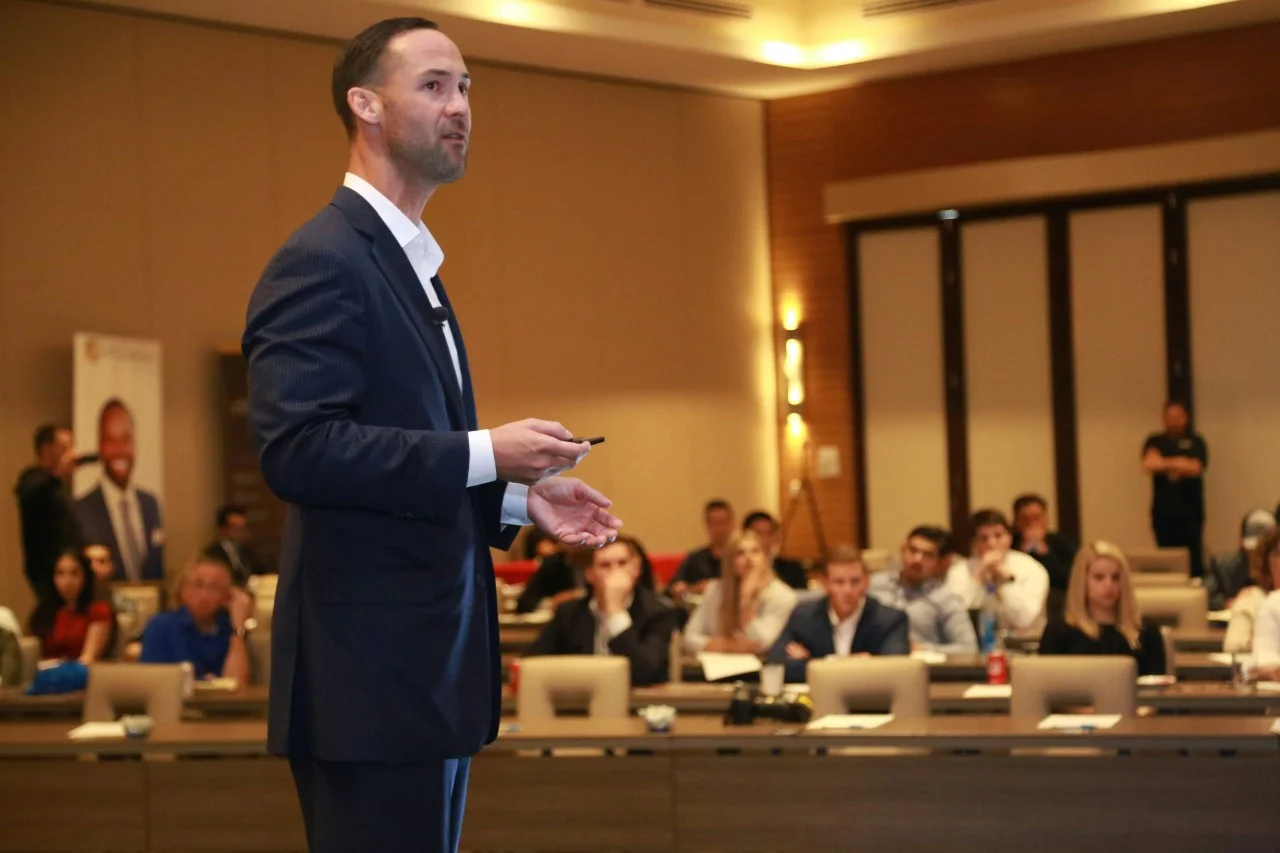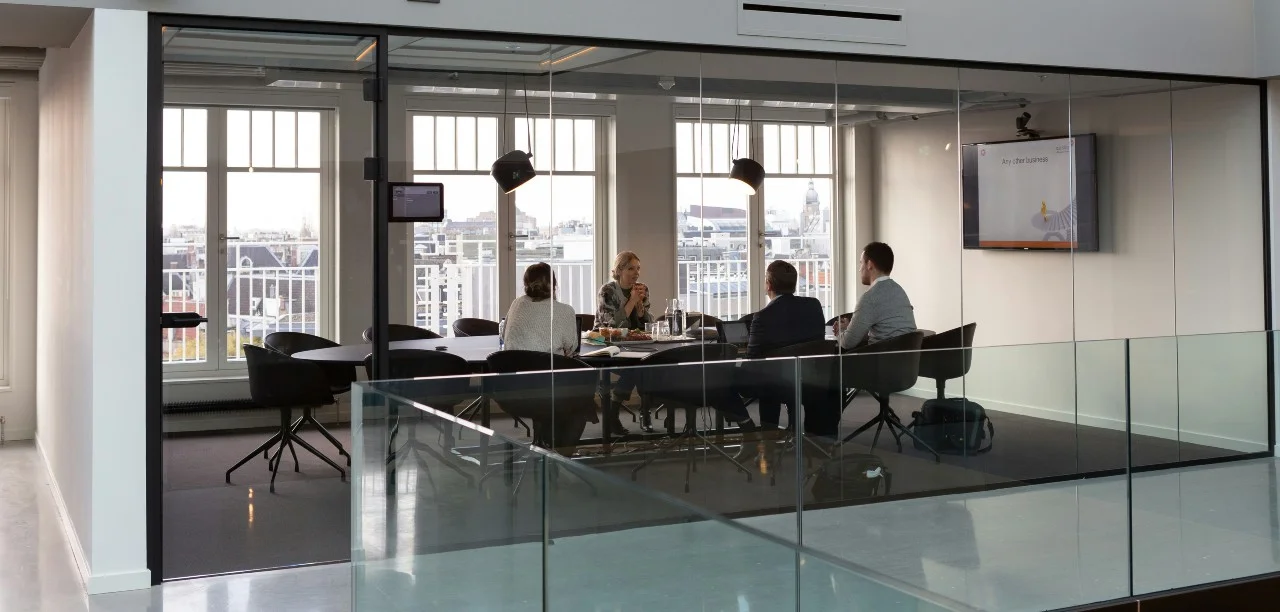Thriving Together: The Intersection of Organizational Culture and Employee Well-being
Recognizing the pivotal role that organizational culture plays in determining employee well-being is essential for leaders committed to creating environments where individuals can thrive personally and professionally.
As stewards of organizational culture, leaders wield significant influence in shaping the ethos and values that define their companies.
From the shared values and beliefs, to the unspoken norms that shape daily interactions, in this article we’ll explore the symbiotic relationship between organizational culture and leadership and sustaining a vibrant company culture.

What is organizational culture?
Often used interchangeably company culture, organizational culture is the collective lifeblood that flows through the veins of an organization. It’s the shared values, beliefs, behaviors, and norms that shape how individuals within the organization interact, and work together.
Organizational culture goes beyond superficial perks like office décor or casual Fridays; it’s the fundamental principles that guide an organization’s decisions, actions, and relationships.
The importance of organizational culture
A strong organizational culture where employees align with the company’s mission & values creates a sense of belonging and purpose. With a culture that resonates and leaders who inspire, your organization can achieve greatness beyond measure.
Why is a company’s organizational culture important?
An organization’s culture is akin to its DNA – it defines who it is, how it operates, and it directly impacts important aspects of an organization like:
Customer relations
Customer relations can influence how customers perceive the company and its products or services.
Employee retention
It plays a significant role in employee retention. When employees feel connected they’re more likely to stay with a company, reducing turnover & enhancing retention.
Attracting & retaining talent
It attracts top talent that resonates with the company’s values, enhancing the quality of the workforce. Positive Reputation - A thriving workplace enhances the organization’s reputation, attracting top talent.
Loyalty
Employees are more likely to remain loyal to organizations that prioritize their well-being.
A strong culture aligns employees with the company’s goals, driving improved overall performance. Engaged and satisfied also employees tend to be more productive.
A strong company culture is like the foundation of a sturdy building. It helps everyone in the company feel good and do their best work, which makes the company successful in the long run.

The 4 types of organizational culture, their characteristics & benefits
Ever wonder why some workplaces feel like families while others are more like competitive arenas? Let’s check out the different types of organizational cultures and what makes each one unique.
1) Clan culture
This culture is characterized by a strong sense of community and teamwork. It values employee development, collaboration, and consensus.
Benefits of Clan Culture: Promotes a sense of belonging and teamwork, and encourages loyalty and commitment
2) Adhocracy culture
Innovation and risk-taking are at the core of adhocracy culture. It encourages creativity and entrepreneurship within the organization.
Benefits of Adhocracy Culture: Drives innovation and adaptability and fosters creativity and risk-taking
3) Market culture
This culture is results-oriented, focusing on competition and achievement. It values customer-centric approaches and profitability.
Benefits of Market Culture: Focuses on results and promotes competitiveness and customer-centricity
4) Hierarchy culture
In this culture, there’s a clear structure and hierarchy. It emphasizes stability, control, and efficiency.
Benefits or Hierarchy Culture: Provides stability and efficiency and establishes clear roles and responsibilities
Each of these types has its own set of benefits and drawbacks, making it essential for organizations to understand which aligns best with their goals and values.
The impact of organizational culture on employee well-being
When employees feel a sense of belonging and align with the company’s values, studies show that employees display enhanced:
Engagement - Engaged employees are more likely to experience higher levels of well-being.
Sense of Purpose - A strong culture provides employees with a sense of purpose and meaning in their work.
Job Satisfaction - Employees who resonate with the culture are more likely to find satisfaction in their roles.
Work-Life Balance - Organizations with a healthy culture often prioritize work-life balance, benefiting employees.
Supportive Relationships - Positive relationships within the organization contribute to a supportive network.
Mental Health - A supportive culture can reduce stress and promote better mental health among employees.
The outcome of organizational culture focused on employee satisfaction is a thriving work environment.

What factors contribute to organizational culture?
Organizational culture is shaped by numerous factors inside and outside the organization including but not limited to these 22 factors:
22 factors that contribute to organizational culture
- Leadership - Leadership style & behaviors set the tone for the culture within an organization.
- Environment - The physical workspace and external surroundings can influence the culture.
- Mission Statement - The company’s mission & vision statements play a pivotal role defining its culture.
- Technology - Technological tools & advancements can shape the way employees work & interact.
- Organizational Structure - The hierarchy & reporting impact how communication & decision-making flow.
- Size of Business - Smaller & larger organizations may have different cultures due to their scale.
- Communication - How information is shared & disseminated can significantly influence culture.
- Socialization - The onboarding process & how newcomers are integrated can shape their perception of the culture.
- Controls - The level of control & regulations within the organization can impact culture.
- Diversity - The diversity of the workforce can contribute to a culture of inclusion and innovation.
- Economic Environment - Economic conditions can influence the culture, especially in times of financial stress.
- Management Policies - Company policies and practices can either support or hinder cultural development.
- Political Factors - External political factors can influence decision-making and culture.
- Rituals - Regular practices and rituals within the organization can reinforce cultural norms.
- Stories - Employee testimonials and stories can shape the perception of the culture.
- Corporate Social Responsibility (CSR) - An organization’s commitment to CSR can be a significant cultural driver.
- Values - Core values define the moral compass of the organization.
- Capability - The skills and capabilities of employees contribute to the culture’s strength.
- Employee Behaviors - The attitudes, behaviors, and interactions of employees collectively define the culture.
- Nature of Business - The industry & sector in which the organization operates can influence culture.
- Ownership - Whether the organization is publicly traded, privately owned, or a nonprofit affects its culture.
- Teamwork - Collaboration & teamwork can foster a positive culture.

How do leaders influence organizational culture?
Leaders have a significant impact on the values, behaviors, and mindset of employees. Leadership is a cornerstone in shaping and maintaining organizational culture.
Leadership influences workplace culture by:
1) Setting the example
Leaders serve as role models. Their actions and behaviors are often mirrored by employees.
2) Defining values
Leaders establish and reinforce the organization’s core values through their words and actions.
3) Communication
Effective communication from leaders can clarify the cultural expectations within the organization.
4) Decision-making
Leaders’ choices and decisions can either support or undermine the desired culture.
5) Recognition & rewards
How leaders recognize, and reward employees can reinforce cultural norms.
6) Conflict resolution
Leaders play a crucial role in addressing conflicts and maintaining a harmonious culture.

The role of leadership in nurturing employee well-being
Leaders play a crucial role in fostering employee well-being within the context of organizational culture.
Here’s how leaders can contribute to employee well being:
Promoting Work-Life Balance - Leaders can set an example by prioritizing work-life balance themselves and encouraging it among their teams.
Creating a Supportive Environment - A leader’s behavior and attitude can contribute to a supportive and inclusive workplace.
Open Communication - Encouraging open and honest communication can help address concerns and reduce stress among employees.
Recognition and Appreciation - Acknowledging and appreciating employees’ contributions boosts their well-being.
Alignment with Values - Leaders who embody the organization’s values help employees connect with the culture and experience a sense of purpose.
Mental Health Support - Providing resources and support for mental health challenges demonstrates care for employees’ well-being.
What is HR’s role in shaping company culture?
Human Resources (HR) departments play a pivotal role in shaping and maintaining organizational culture. They are responsible for various aspects that impact culture, including:
- Recruitment & Selection - HR professionals ensure that new hires align with the organization’s cultural values
- Training & Development - HR facilitates training programs that reinforce cultural norms and behaviors
- Policies and Procedures - HR establishes and enforces policies that support the desired culture
- Employee Engagement - HR fosters employee engagement initiatives to maintain a positive culture
- Diversity & Inclusion - HR promotes diversity and inclusion efforts that contribute to a more inclusive culture
The benefits of a thriving work environment
A thriving work environment, cultivated through a positive organizational culture and effective leadership, offers numerous benefits:
- Innovation & Creativity - Employees in a thriving environment are more likely to contribute innovative ideas.
- Improved Employee Health - Lower stress levels and better well-being contribute to better overall health.
- Adaptability - An adaptable culture helps organizations navigate change more effectively.

How is your company’s culture?
Understanding your current company culture is a critical first step in the journey of culture development.
How do you define your current company culture?
It involves assessing the existing norms, values, and behaviors within the organization. To define your current organizational culture:
- Conduct Surveys - Employee surveys can provide insights into how employees perceive the culture.
- Interviews & Focus Groups - Engage in discussions with employees to gather qualitative data.
- Analyze Artifacts - Examine the tangible elements of culture, such as office layout and rituals.
- Review Policies - Evaluate existing policies to see if they align with the desired culture.
- Assess Employee Behavior - Observe how employees interact and behave within the organization. What behaviors are rewarded implicitly / explicitly?
Cultivate an environment where employees feel a deep sense of belonging and are motivated to contribute their best and your organization will soar.
Which is the right organizational culture for your company?
How to determine which is right?
Determining the right organizational culture for your company is a critical decision. It should align with your company’s values, goals, and industry. Let’s explore how to make this decision.
- Assess Your Values - Identify the core values that matter most to your organization.
- Set Clear Objectives - Define your organizational goals and what you aim to achieve through culture.
- Industry Alignment - Consider how your culture aligns with the expectations of your industry.
- Employee Input - Seek input from employees to understand their cultural preferences.
- Leadership Alignment - Ensure that leadership is aligned with the desired culture.
- Competitive Advantage - Evaluate whether your culture can provide a competitive advantage.
Can you change the culture?
Yes, organizational culture can be changed, but it requires a deliberate and well-planned effort. It’s not a quick fix, but it’s possible with commitment and the right strategies.

How to change organizational culture
Changing organizational culture is a complex process. Here are the steps for Organizational culture transformation for leaders to build a high-performing organizational culture:
- Assessment - Begin by assessing your current culture to identify areas for improvement.
- Leadership Alignment - Ensure that leadership is fully aligned with the desired cultural changes.
- Vision and Values - Clearly define the new vision and values that you want the organization to embrace.
- Communication - Communicate the cultural changes transparently to all employees.
- Training and Development - Provide training and development opportunities to help employees adapt to the new culture.
- Behavioral Change - Encourage and reward behaviors that align with the desired culture.
- Feedback and Adjustment - Continuously gather feedback and adjust the cultural initiatives as needed.
- Long-Term Commitment - Understand that culture change takes time and long-term commitment.
Your commitment to building a high-performing organizational culture will not only benefit your business but also enhance the lives of those who make it all possible – your dedicated workforce.

Leaderships key to a thriving work environment is the organization’s culture
Organizational culture is the lifeblood of any thriving work environment. It defines an organization’s identity, impacts employee engagement, and influences its ability to adapt and succeed.
A thriving work environment isn’t a mere aspiration; it’s an achievable reality when leaders recognize the significance of organizational culture and actively work towards creating a culture that inspires & empowers employees. With a corporate culture that resonates and leaders who inspire, your organization can achieve greatness beyond measure.
Leaders play a pivotal role in shaping and maintaining the desired culture, making it crucial for them to align their actions and behaviors with the organization’s values and goals. Contact Skyline G today to learn more about how we can help leaders at your organization shape organizational culture.













